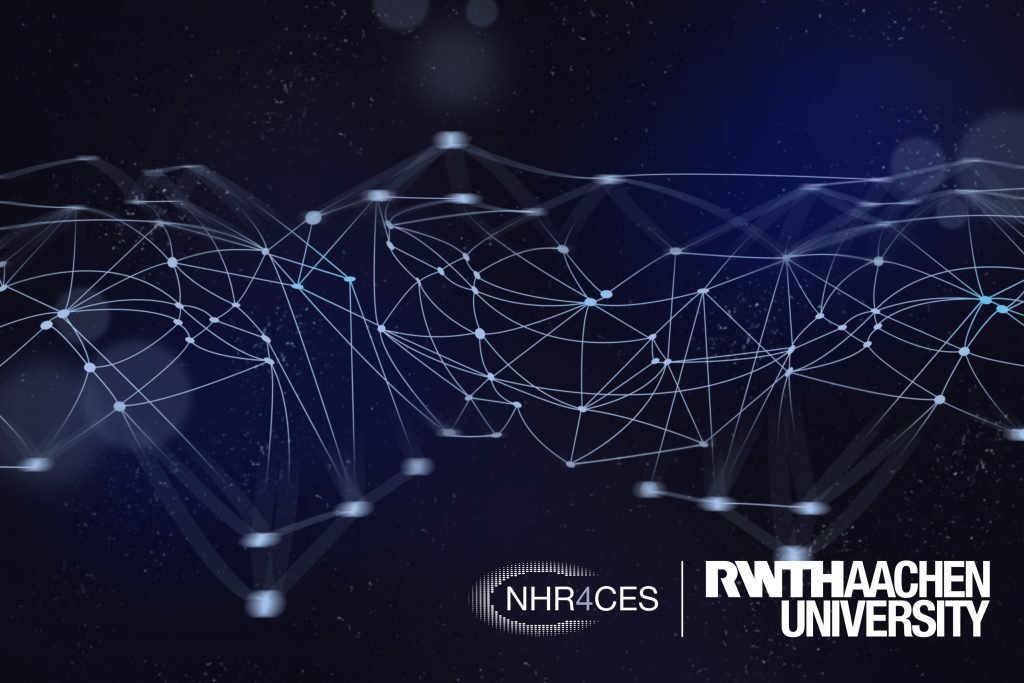So what? NHR – what is that anyway?
NHR – that stands for “National High Performance Computing” and is a project of the Joint Science Conference (Gemeinsamen Wissenschaftskonferenz (GWK)). With the help of this project, researchers throughout Germany are to be guaranteed access to the computing capacity they need for their research. “High-performance computing” describes computer-based computing that requires high computing power or storage capacity. This is becoming increasingly important in research and teaching. Nowadays, the use of and access to high-performance computers is indispensable for many research fields.
For this reason, the state and federal governments have agreed in the Gemeinsamen Wissenschaftskonferenz (GWK) to jointly promote not only research buildings and large-scale facilities but also high-performance computing at universities. This is meant to strengthen the international competitiveness of Germany as a research location in the fields of simulation and big data, among others. The aim is to create a nationally coordinated network of high-performance computing centers. This network offers all German universities appropriate resources and services for national high-performance computing.

RWTH becomes part of the National High Performance Computing Network
Source: NHR4CES
On January 7, 2020 the time had finally come: the call for funding was published. Now interested computing centers had until the 17 April 2020 to submit their applications. In the context of a competitive and science-led selection process, the German Research Foundation (DFG) then evaluated the applications for their eligibility for funding as part of the National High Performance Computing at German universities.
So how did the RWTH participate?
RWTH Aachen University, like TU Darmstadt, has been successfully running high-performance computers of supra-regional importance – so-called Tier 2 computers – for years. This means that parts of the two systems are open to academic researchers from all over Germany. Based on this, both universities have strongly promoted Computational Engineering Sciences (CES) in countless collaborative projects, graduate schools and study programmes under the leadership of their respective computing centers. The focus has been on engineering applications, especially with regard to complex flow scenarios, energy conversion, material design and engineering-oriented physics, chemistry and life sciences. Thus, both universities not only fulfill the basic requirements for application, but also have a good basis for a successful application due to these activities and experiences.
And so it is not surprising that the two universities, under the leadership of Professor Matthias S. Müller (IT Center, RWTH Aachen) and Professor Christian Bischof (University IT-Service and Computer Center, TU Darmstadt), are combining their existing strengths in the “National High Performance Computing Center for Computational Engineering Sciences” (NHR4CES), thereby complementing each other perfectly. In addition, thanks to the long-time cooperation between RWTH Aachen University and Forschungszentrum Jülich in the JARA Center for Simulation and Data Science, NHR4CES benefits from many valuable competences and experiences resulting from the transition to the so-called Tier-1 level of internationally operating supercomputers.
So? What happened?
At its meeting on the 13th November 2020, the GWK recommended eight data centers nationwide for the planned establishment of a National High Performance Computing Network for funding. These include RWTH Aachen University and TU Darmstadt.
These additional six data centers will be included in the NHR network:
- Berlin University Alliance
- Technische Universität Dresden
- Friedrich-Alexander-Universität Erlangen-Nürnberg
- Georg-August-Universität Göttingen
- Karlsruher Institut für Technologie
- Universität Paderborn
The federal and state governments are providing a total of 62.5 million euro annually over a period of ten years to cover the necessary investment, operating and personnel costs. The two NRW universities (Aachen and Paderborn) will receive around eleven million euro for the further expansion of their existing computing centers.
So what are the reactions?
Professor Ulrich Rüdiger, Principal of RWTH Aachen University, describes the recommendation of the GWK as a great success for the university: “In recent years, RWTH Aachen University has specifically developed the topic of research infrastructures around high-performance computing. The admission into the NHR network is the acknowledgement of the performance of our researchers. In cooperation with our partner TU Darmstadt, we can advance high-performance computing with topics such as AI, data science and simulation science”.
The two responsible professors are also very pleased about the success and the sponsored continuation of their good cooperation within NHR4CES. Last year, they were already successful with their joint NFDI4Ing application in the National Research Data Management competition. The professors agree: “With NHR4CES, we are now developing an ecosystem for high-performance computing that will advance simulation and data-based research, especially for the engineering-oriented, computer-aided research disciplines in Germany”.
The Minister of Science of NRW is delighted
“With the National High Performance Computing project, the federal and state governments are setting the foundation for the establishment of a functioning national network of data centers, which will decisively advance research in Germany. The fact that two data centers in NRW are to become part of this network is a great success for the universities in Aachen and Paderborn and also for NRW as a center of science,” says Isabel Pfeiffer-Poensgen, Minister of Science of the State of NRW.
We are very pleased with the GWK’s decision and congratulate all data centers that will be included in the NHR network.
Responsible for the content of this article is Tanja Wittpoth-Richter.




